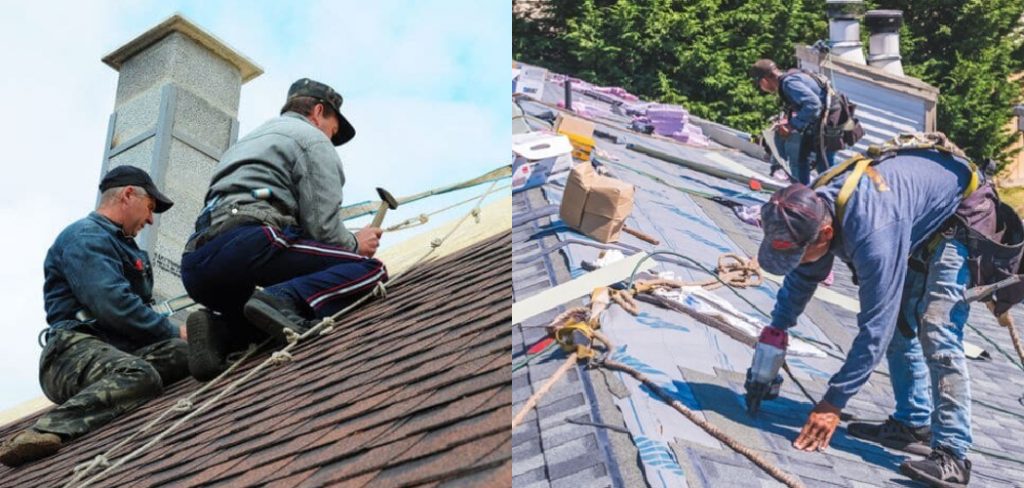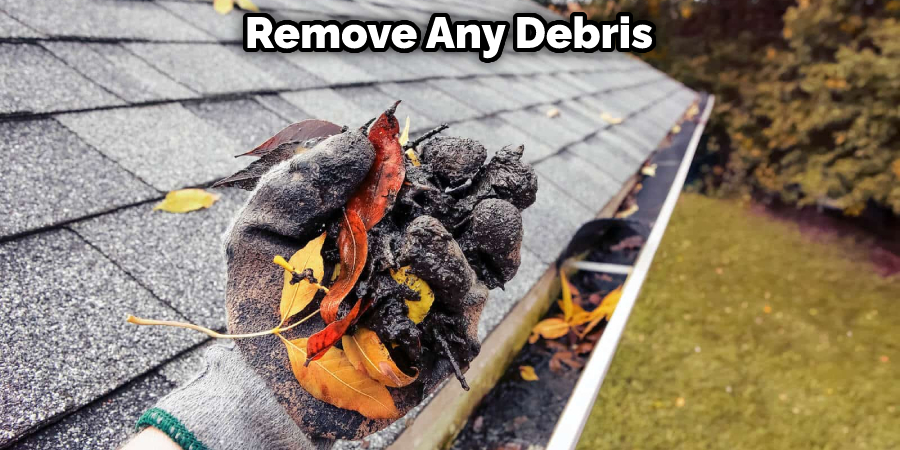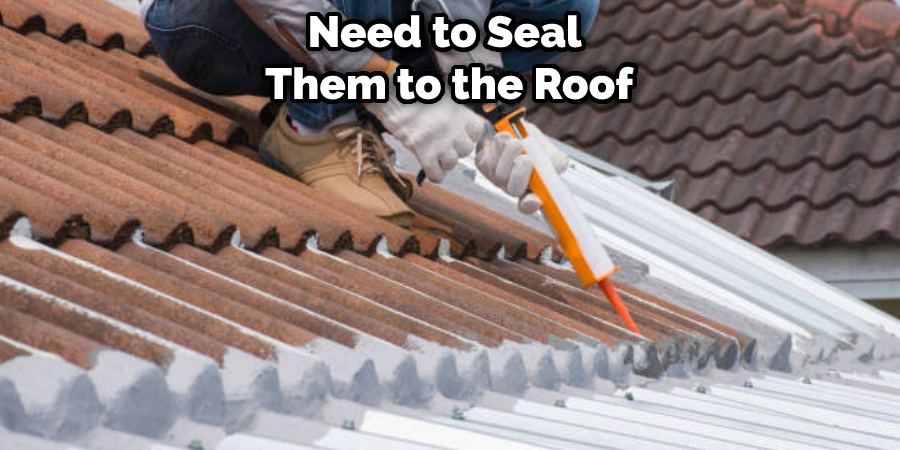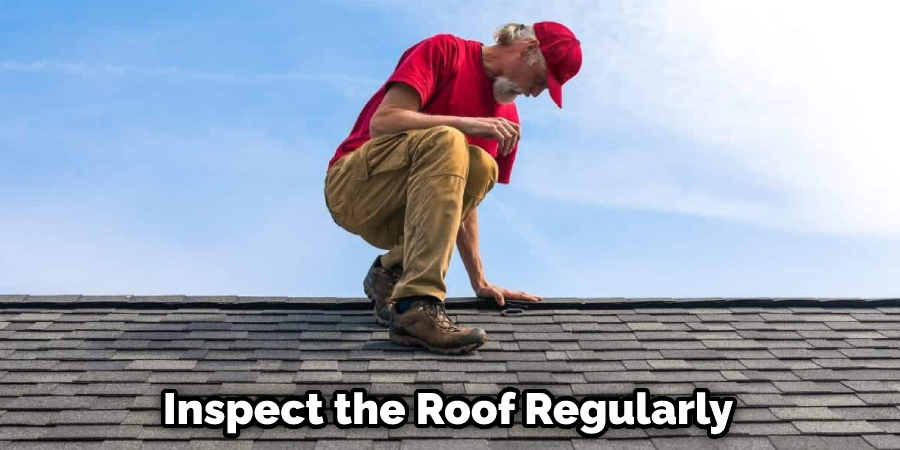If you have shingles blowing off your roof, don’t worry – it’s a fairly easy problem to fix. You need to replace the missing or damaged shingles as soon as possible to prevent further damage to your roof and home. This blog post will show you how to repair roof shingles blown off using simple steps and tools. Let’s get started.

Shingles are a crucial layer of protection for your roof, keeping it safe from harsh weather conditions. They are typically made from materials like asphalt, wood, slate or metal, meaning they can be vulnerable to high winds and stormy weather. If shingles are blown off your roof, it can leave your home susceptible to water damage or other types of structural damage. Keep your home safe by ensuring your shingles are in good condition and can withstand strong winds and storms.
If you live in an area that is prone to high winds, it is important to keep an eye on your roof and check for damage regularly. If you find that your shingles have been blown off, it’s important to fix them as soon as possible to avoid further damage.
Summary: If your roof is damaged and shingles have blown off, there are a few steps you can take to repair the damage. First, find the location of the damage. Next, determine the severity of the damage. Finally, determine the necessary supplies and tools to repair the damage.
How to Identify Roof Shingles Blown Off
If high winds have hit your home, it’s important to check your roof for any damage. One of the most common types of damage from high winds is shingles that have been blown off. This can leave your roof vulnerable to further damage and leaks, so it’s important to repair any damage as soon as possible. Here’s how to identify roof shingles that have been blown off. First, check for any missing or damaged shingles. If you see any, it’s likely that wind was the cause.
To determine if wind damage is the cause of your missing or damaged shingles, also look for any nails that may have been pulled out of the shingles. Furthermore, check the area around the missing or damaged shingles for any other damage. If you find any of these signs, it’s important to repair the damage as soon as possible to prevent further damage.
Step by Step How to Repair Roof Shingles Blown Off
1. Remove Debris From the Damaged Shingles
The first step is to remove any debris that may be on the damaged shingles. This includes any nails, screws, or other fasteners that may have come loose. Also, remove any dirt or debris that may be on the shingles. This will make it easier to work with the shingles and will also prevent any further damage to the shingles.

2. Cut Away the Damaged Shingles
Start by removing the damaged shingles. Then, use a utility knife to cut through the sheathing along the edges of the damaged shingle. You can also use a pry bar to remove the nails holding the shingle in place. Once the damaged shingles are removed, you’ll need to replace them with new ones.
3. Use a Hammer
Use a hammer to drive nails into the shingles. Make sure that the nails are driven in at an angle so that they are flush with the shingle’s surface. If the nails are not driven in at an angle, they will not hold the shingle in place, and it will eventually blow off. Use a utility knife to cut off any excess shingle that hangs over the edge of the roof. Be careful not to cut too deeply, as you may damage the roof decking.
4. Use Roofing Cement
After removing the nails, use roofing cement to secure the shingles in place. Squeeze a generous amount of cement onto the back of the shingle and press it firmly into place. Wipe away any excess cement with a rag. It is important to use roofing cement instead of regular cement, as it is specifically made to adhere to asphalt and will form a stronger bond. Regular cement will not be as effective and could potentially damage your roof.
5. Press the Shingles Into Place
After the cement has been applied, press the shingles firmly into place. Please make sure that they are level and even with the rest of the roof. Using a putty knife or other tool may be necessary to press them down correctly. Allow the cement to dry for at least 24 hours before continuing.
6. Nail the Shingles Down
Once the shingles are in place, you’ll need to nail them down. Use roofing nails that are long enough to go through the shingle and into the sheathing beneath. Space the nails about six inches apart, and be sure to drive them in at a slight angle, so they bite into the sheathing.
7. Seal the Shingles
Once all of the shingles are in place, you’ll need to seal them to the roof. Roofing cement and tar can be used for this purpose. First, apply a layer of roofing cement to the back of each shingle. Then, press the shingle into place. Finally, apply a layer of tar over the top of the shingle to seal it to the roof.

8. Replace Any Damaged Shingles
Once all of the shingles are in place, take a close look at each one to ensure no nails are sticking up or any other damage. If you find any damaged shingles, remove them by prying them up with a flat head screwdriver and hammering the nails down. You can then replace the damaged shingles with new ones.
9. Check the Valleys
The valleys of your roof are especially susceptible to damage during a storm. If you find that your shingles have been blown off or damaged in the valleys, it’s important to take action quickly to avoid further damage. To repair valleys, start by removing any debris that has been collected in the area. Once the area is clean, apply a generous amount of roofing cement to the underside of the shingles. Press the shingles firmly into place and allow the cement to dry. If the damage is more extensive, you may need to replace the valley flashing. Valley flashing is a strip of metal that helps to waterproof the area where two roof planes meet. To replace valley flashing, remove the old flashing and install new flashing in its place. Use roofing cement to seal any gaps and ensure a watertight seal.
10. Inspect the Roof
Once all of the repairs have been made, it’s important to inspect the roof as a whole to ensure that there are no other areas that need to be addressed. Look for any missing shingles, nails that have come loose, or any other signs of damage. If any are found, make the necessary repairs right away. By taking care of the problem immediately, you can avoid further damage and expensive repairs down the road.
You Can Check It Out to Repair Leaking Concrete Roof

How to Prevent Roof Shingles Blown Off
The high winds associated with thunderstorms and hurricanes can cause damage to your home, including blowing shingles off your roof. If this happens, it’s important to take action quickly to prevent further damage. Here are some tips on how to prevent roof shingles blown off:
- Inspect your roof regularly. It’s important to catch any damage early so you can make repairs before the next storm hits.
- Make sure your shingles are in good condition. If they’re old or worn, they’ll be more likely to blow off in high winds.
- Secure your shingles with hurricane clips or nails. These will help keep them in place during high winds.
- Choose a wind-resistant shingle. Some shingles are designed to resist high winds. Ask your roofer about these options when you’re having your roof replaced.
- Have your roof inspected after a storm. Even if you don’t see any damage, it’s still a good idea to have a professional take a look. They can spot any damage that you might have missed.
Taking these steps will help to prevent roof shingles from blowing off during a storm. If you experience damage, make sure to repair it quickly to prevent further damage.
Tips and Warnings on How to Repair Roof Shingles Blown Off
Tips
- If your shingles are only slightly lifted, you can use a putty knife to push them back into place.
- Secure the shingles with roofing nails.
- If the shingles are severely damaged, you will need to replace them.
- Make sure to wear gloves and a mask when working with roofing nails.
- Be careful not to damage the roofing felt when repairing the shingles.
- Use a hammer to drive the nails into the shingles.
- If the nails are too long, they can puncture the roofing felt.
- Make sure the nails are driven in at a slight angle so they will grip the shingles.

Warnings
- Do not attempt to repair your roof if you are not comfortable working on a ladder.
- Be sure to have someone hold the ladder for you while you are working.
- Never stand on the top two steps of a ladder.
- Wear closed-toe shoes while working on your roof.
- Use caution when working around power lines.
Frequently Asked Questions
Will a Roof Leak if Shingles Blown off?
This is because roofs are made up of many small sheets of metal that overlap one another, and when the shingles are removed, there may be gaps between the metal sheets where water can easily seep in. Additionally, since roofs typically have seams along their length, torn pieces of shingle could flutter around and create further openings for moisture to enter.
Can You Replace Just a Few Shingles?
While there is no definitive answer to this question, most experts believe that you may not need to replace all of your shingles. If you have only a few lesions, topical treatments such as topical painkillers or numbing creams may be sufficient. In some cases, injections of steroids into the lesion(s) may also provide relief. On the other hand, if you experience severe pain or numbness from a shingle eruption, it’s recommended that you see a physician for further evaluation and treatment.
Shingles are caused by the herpes zoster virus (HZV), which is related to cold sores and genital herpes infection.
Will a Roof Leak if Shingles Blown off?
A roof leak can occur in a number of different ways, but the most common scenario is when shingles are blown off. When this happens, water can get into the attic and damage any materials that it comes in contact with. This could lead to a roof leak that causes moisture problems or even structural issues.
To prevent this from happening, always make sure to remove all of your shingles periodically and replace them with new ones that adhere properly to the roof surface. If you notice any signs of a leak, such as wetness on the ceiling or walls, don’t delay in getting it fixed – weather conditions may change quickly, and results might not be looked at positively if there’s an issue later down the line.
Can You Reuse Blown off Shingles?
Blown-off shingles is a painful, debilitating condition that can occur after a person has a severe case of chickenpox. Blown-off shingles is caused by the varicella-zoster virus (VZV), which is the same virus that causes chickenpox. In severe cases, the blisters that form from the VZV can burst and release the fluid that usually accumulates inside them. This fluid contains the virus and can spread the infection to other areas of the body.
There is no cure for blown-off shingles, but there are treatments available to help relieve pain and reduce the risk of further complications. The most common treatment is a topical cream or ointment applied to the affected area three times a day. Oral antiviral medications may also be prescribed in cases where complications such as pneumonia or sepsis develop. If you experience any pain or discomfort, it is important to see your doctor as soon as possible.
Conclusion
This article has provided you with information on How to Repair Roof Shingles Blown Off. Repairing roof shingles blown off is a process that most homeowners can do. However, it is important to take the time to assess the damage and make sure that all of the shingles are accounted for before beginning the repair process. By following these simple steps, you can have your roof look good as new.
Have you ever had to repair roof shingles blown off? What tips would you add? Please write a comment below to let us know. Please share this article with your friends and family if you found this article helpful. Thank you for reading.
